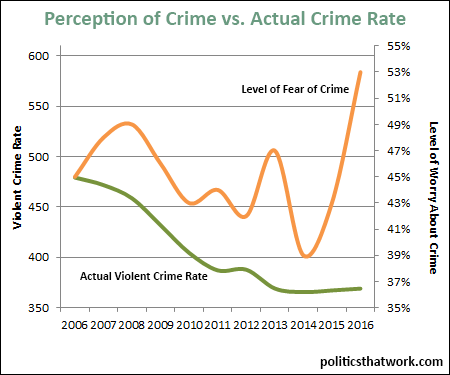
Description: The green line represents the actual violent crime rate in the United States and the orange line represents the percentage of Americans who worry about violence and crime "a great deal."
Sources: FBI FBI FBI Gallup
Data: Excel
Last updated: July 23, 2016





